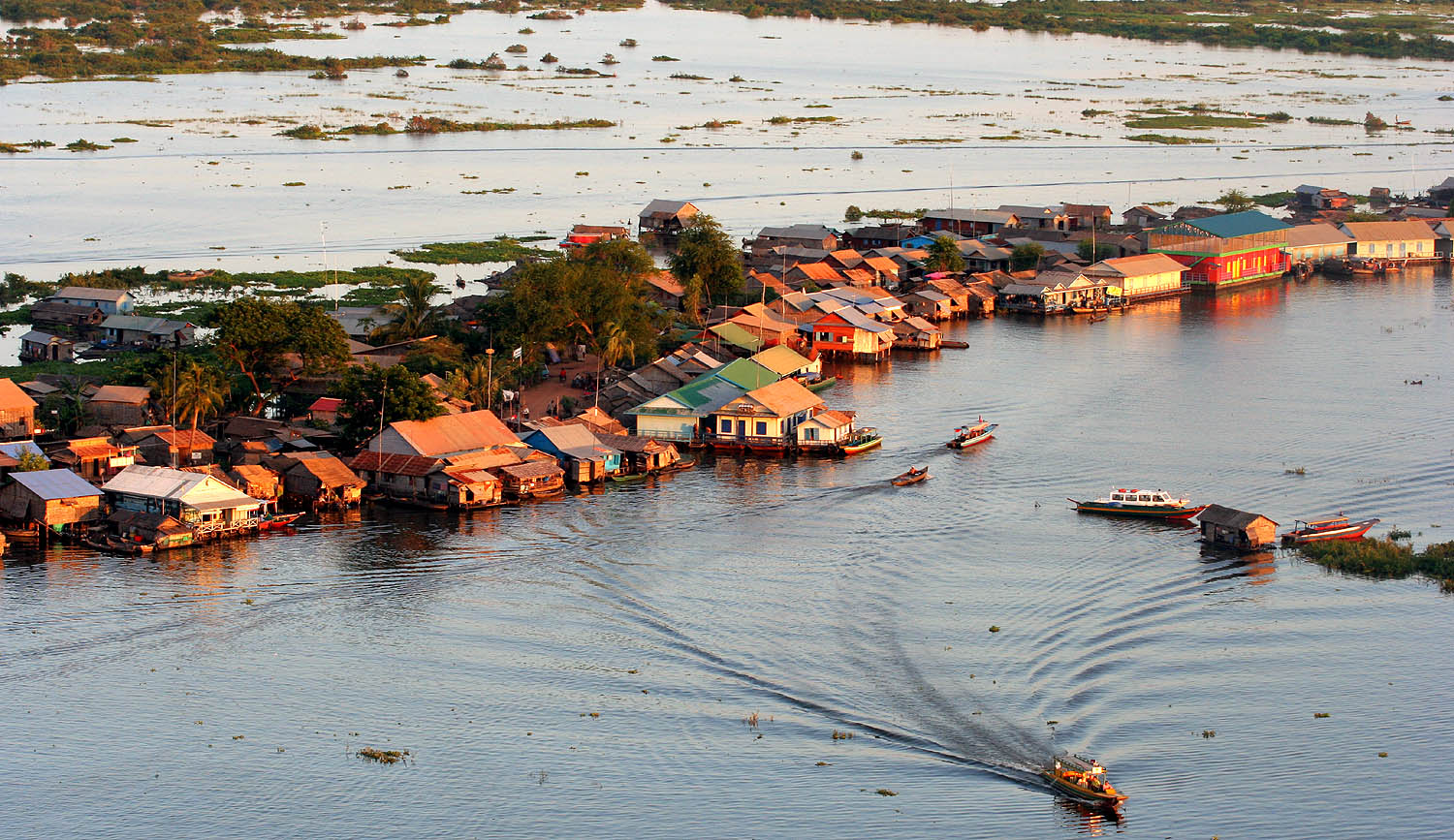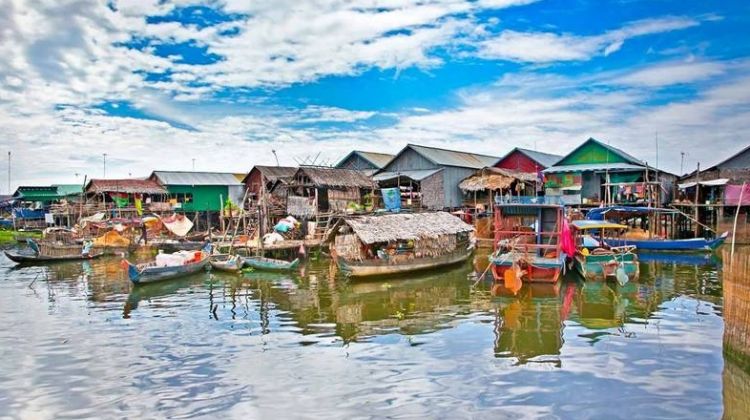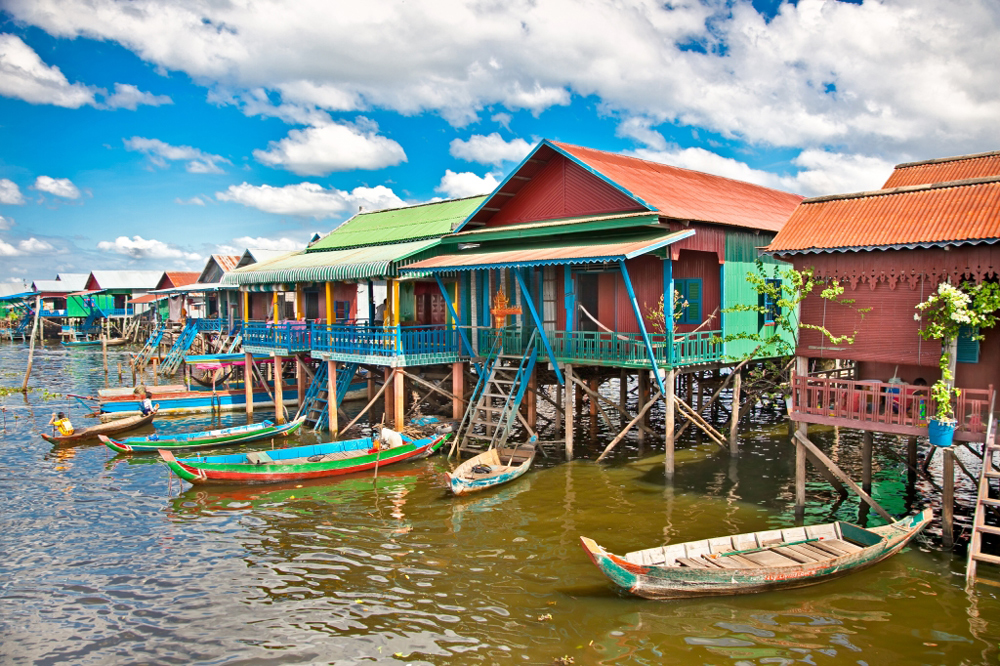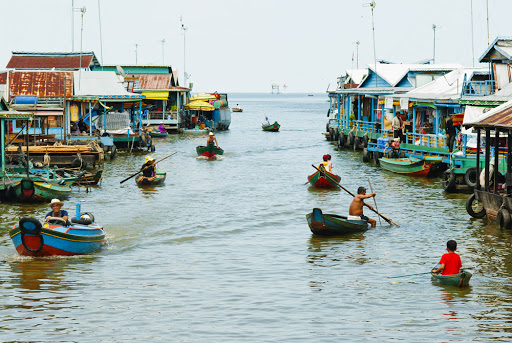The Lake is the largest freshwater in South East Asia. Its dimension changes depending on the monsoon and dry season. During raining season from June to October, the lake is filled by water flowing from the Mekong with 14 meters in depth and expands the surface of 10,000 square Kilometers. In the dry season from November to May its size 3,000 square kilometers with two meters in depth and water flows out from the Lake to the Mekong, in and out flowing is a natural phenomenon occurrence.

The flooded forest surrounding the edge of the lake is the best shelter and also very important for all kinds of fishes spawned and breeding babies. This lake providing many biodiversities, over 300 species of freshwater fishes, as well as snakes, crocodiles, tortoises, turtles, and otters. More than 100 varieties of water birds including storks, pelicans, etc.


The Lake is also an important commercial resource, providing more than half of the fish consumed in Cambodia. In harmony with the specialized ecosystems, the human occupations at the edges of the lake is similarly distinctive – floating villages, towering stilted houses, huge fish traps, and an economy and way of life deeply intertwined with the lake, the fish, the wildlife, and the cycles of rising and falling waters.


The lake located about 15 km south of Siem Reap town; you can make your journey from Siem Reap to Phnom Penh by express boat crossing the lake and dock at the village of Chong Khneas. It takes only six hours, but this trip we may recommend you during Monsoon season. In the dry season, the boat sometimes stuck in the mud because the water is low. There are several ways to see the culture and wildlife of the lake area depending on the amount of time you have and your interest.
According to Tourist of Cambodia













